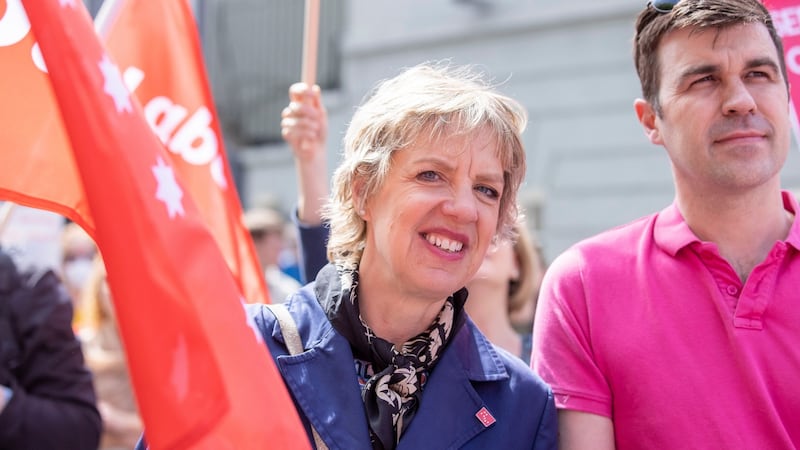After the 2007 general election, then Labour Party leader Pat Rabbitte accepted that the party had “flatlined” in the polls, having come out of the vote with the same number of seats. Despite a few outlier results, such flatlining has been a familiar story for the oldest party in the State throughout the course of its long history.
The only difference between 2007 and now is that the party went into, and came out of, that election with 20 seats. Now the party’s consistent number seems to be around six or seven, and it has struggled to get north of 4 per cent in opinion polls.
There will be pressure on party leader Ivana Bacik and her six TD colleagues at its national conference in Cork this week to show that the party is moving out of the holding pattern of the past seven years.
Participation in the 2011 to 2016 coalition clearly cost the party. After an experience like that, there are numerous examples in Irish electoral history that show it can take a decade or more for a party to make anything like a full recovery.
RM Block
Labour has been lumped in with the establishment and has had difficulty extricating itself from that label
And full recovery is a relative term. The past decade has seen a transformation of political culture, with a marked decline in support for the two main “establishment” parties, Fianna Fáil and Fine Gael. Since 2011, Labour has been lumped in with the establishment and has had difficulty extricating itself from that label. Even now, when ‘left wing’ campaigns are being organised protesting against Government policies, Labour is often excluded.
[ Almost a year after Ivana Bacik’s election as leader, Labour is in disarrayOpens in new window ]
Its solution last year to its continuing decline was to purge its new leader, Alan Kelly, who was less than 18 months in the job. Kelly was not everybody’s cup of tea and was disliked by some of his colleagues. But he had been effective and high-profile and certainly had not tanked in the job.

They chose Ivana Bacik as his replacement, the party’s newest TD, though a vastly experienced senator. Bacik was best known as a campaigner on equality, abortion and women’s issues and was widely admired within the party. Her first nine months in the job were almost anonymous, however, and she seemed uncomfortable talking about subjects outside of her own core interests. Her performances have improved markedly in recent months, but she is not a “go for the jugular” politician in the mould of Mary Lou McDonald or, indeed, Alan Kelly.
[ Eviction ban wasn't even close in the endOpens in new window ]
[ Almost a year after Ivana Bacik's election as leader, Labour is in disarrayOpens in new window ]
That said, the party has become more assertive and emboldened, a sign that it is finally ridding itself of the sackcloth and ashes of being in government with Fine Gael. A sign of that is its motion of no confidence in the Government next week, its first motion of no confidence since coming out of Government in 2016. In fact it is the first proper motion of no confidence from Labour since 2000, when it tabled one in Bertie Ahern over his evidence to the Moriarty tribunal.
Considerable overlap
The polls have continued to flatline for the party since Bacik became leader. Opposition parties often talk of Fianna Fáil and Fine Gael as Tweedle Dum and Tweedle Dee. You get that phenomenon too on the Opposition benches. There is considerable overlap between the Opposition parties (People Before Profit excepted) on issues such as social policy, the equality agenda, economic policies, large State institutions, housing policies, immigration policies and gender policies.
Sinn Féin’s climate-change policies differ from Labour and the Social Democrats, but there is no evidence that climate policies will be a clincher with the electorate, especially when there is a crisis.
The party might hope to take some votes from the Greens in the next election. It will also be more attractive for transfers than it was in 2016 and 2020. That said, the Social Democrats will be fighting over the same spoils and is hoping its new and energetic leader, Holly Cairns, will give it the kind of impetus that could bring its seats into double figures.
With the Government now over its halfway point, Ivana Bacik will certainly be under pressure to deliver a performance in Cork that can give the party’s membership hope that it is on a recovery trail.











